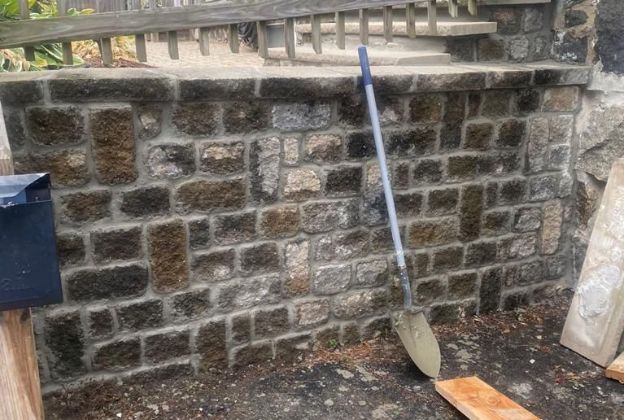

Many people don’t realize that retaining walls are required to be built by professional engineers or landscape architects. Retaining walls are vertical structures designed to hold back earth or other material. Their purpose is to provide support for the soil behind them, or to make sloping ground more usable.
Retaining walls can be made with a variety of building materials including wood, stone, brick and concrete. They can also be made with landscape blocks (sometimes called segmental retaining wall blocks) which are manufactured modular blocks that usually have some type of method to lock them together.
Retaining walls are commonly used in situations where there is a slope on one side of a property, but the property owner wants usable land on both sides. For example, a home builder may want the backyard to be at the same level as the house, so that it’s easier and safer to go from one area to another. A large back porch may also be installed across the back of the house at the same level as the yard, creating a smooth transition from indoors to outdoors.
Benefits Of Retaining Walls
A retaining wall is a structure designed to support soil at an incline. There are a number of benefits that can be realized by installing a retaining wall on your property.
One of the major benefit of retaining walls is that it helps to improve the appearance of your yard. Retaining walls are used in landscaping to decorate yards and to make them more functional. Retaining walls can be used as borders, and they can be used to create gardens with raised beds.
Protection: Retaining walls can protect your home from additional erosion by holding back soil that is at risk of becoming loose during heavy rain or melting snow. They can also help you keep soil away from your foundation, preventing cracks that may lead to water damage.
More Usable Space: By installing a retaining wall, you can create additional usable space on your property. This is especially true if you have a steeply sloped yard with limited areas for gardening or landscaping.
Enhanced Curb Appeal: Retaining walls are available in a variety of beautiful designs and finishes. Not only they will improve the functionality of your property; they can also enhance its visual appeal.
Increased Property Value: Installing a retaining wall will increase your property value and make it more attractive to potential homebuyers if you ever decide to sell your home in the future.
Choosing Materials For Retaining Walls
The first step in planning a retaining wall is to choose the material. Retaining walls are usually constructed of concrete, stone, or wood.
Concrete and stone are the two most common materials for retaining walls, with each offering its own benefits and drawbacks. Concrete is less expensive, easy to install, and extremely durable. Stone is much more expensive, but it has a natural aesthetic appeal that is lacking in concrete.
Wood retaining walls can be constructed either by using pressure-treated lumber or by stacking untreated logs. The advantage of using treated lumber is that it prevents rot and insect damage while providing a beautiful finish on the wall’s exterior. Logs have the advantage of being easy to work with and giving a natural look to the wall.
Does your property need retaining walls?
Retaining walls are essential for supporting the soil on properties with a slope. They can help prevent landslide and mudslide, as well as collapsing soil, which is why they are such an important part of any property.
If you have a property that needs retaining walls, we’re here to help. Bespoke Masonry & Waterproofing has been in business for over 20 years, and we have years of experience building retaining walls for our clients. We will be happy to take on your project, so get in touch today!